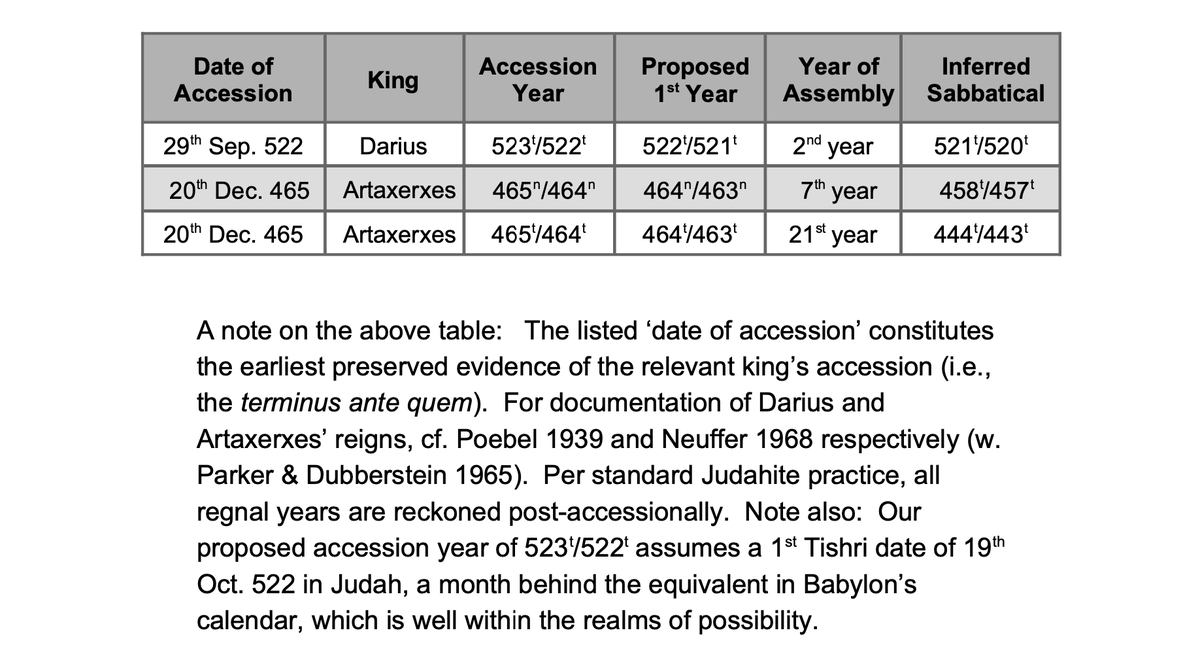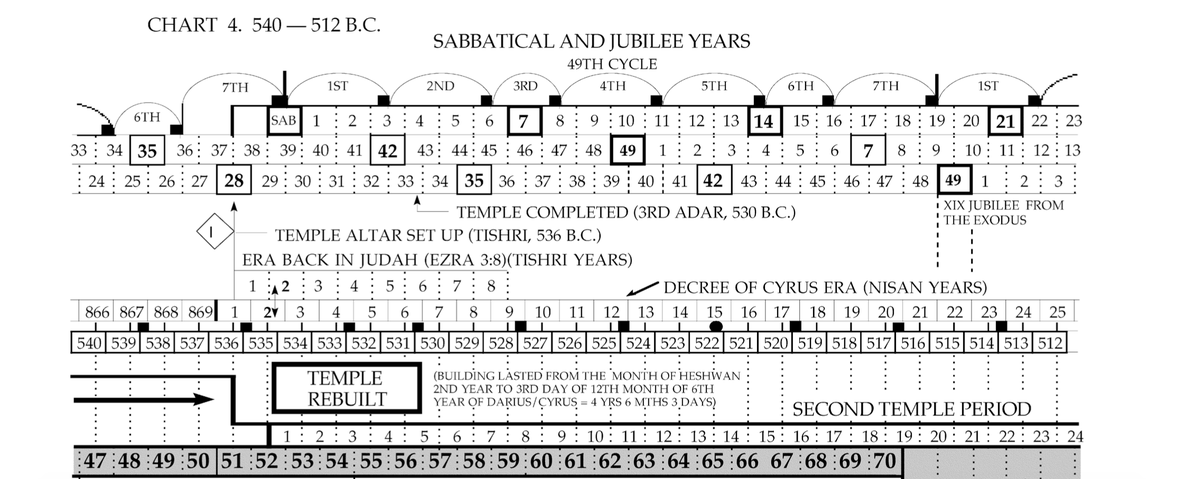TITLE: Patterns and Coherency in Biblical Dates
More on some of the little-known delights of Scripture.
For part I, see the link below. Otherwise, please scroll down.
In particular, I want to consider the Bible’s year-stamps, i.e., references to ‘the Xth year of Y’, where Y denotes some kind of era.
which isn’t bad progress for a few tweets.
Here, we’ll pick up the story with the era of the Kings.
Initially, they’re relatively straightforward to follow.
But the reigns of Judah and Israel’s kings soon (appear to) drift out of sync with one another;
The reason is twofold.
First, due to co-regencies in the reign of Israel’s kings (Steinmann 2011:127–1701)—a phenomenon well-attested in other kingdoms.
In the aftermath of Solomon’s reign, Israel splinters into two kingdoms, each with its own centre of worship and administration.
Jeroboam is said ‘to invent a month independently’ (חדש אשר בדא מלבד) and to institute a northern kingdom feast ‘on the 15th day of the 8th month’,
Is the similarity between Jeroboam’s feast and the feast of Tabernacles a coincidence?
It doesn’t seem so.
From the perspective of Judah’s calendar, Jeroboam’s feast would have taken place in the 8th month (rather than the 7th month),
and could hence explain what we read in 1 Kgs. 12.
And, soon afterwards, our author’s synchronisms fail,
and the date-stamps preserved in the book of Kings can be shown to exhibit coherent patterns.
To mark the establishment of his dynasty, Jeroboam institutes a non-accessional calendar,
(Egypt may even have sponsored Jeroboam’s reign in some way: 1 Kgs. 14.25.)
The southern kingdom includes co-regency figures in its year-counts, while the northern kingdom never does (Young 2005).
And Jotham may have instated Ahaz as his co-regent as Rezin and Pekah began to close in on him (2 Kgs. 15b w. 16a).
At the same time, the way in which certain kings’ reigns interlock reveals informative patterns.
and are consistent with the details and tenor of the narrative in which they are found.
Finally, then, we come to the post-exilic era.
The post-exilic era is part of ‘the times of the Gentiles’.
Consequently, Scripture reckons years either by reference to the reign of Gentile kings or by reference to the dates of Israel’s exile and return.
as one would expect given Mesopotamia’s influence on Israel’s culture.
Nehemiah, for instance, refers to ‘Nisan in the 20th year of Artaxerxes’ (Neh. 2.1), which appears to postdate Kislev of the same year (1.1).
since Sabbatical-year-related activities seem to take place at seven-yearly intervals.
in which case he would probably have arrived in Jerusalem in the 6th month (in time for a 7th month assembly).
Nevertheless, that the activities of Hagg. 2, Ezra 7, and Neh. 8 can, potentially, be connected together by an independently attested Sabbatical cycle seems noteworthy.
In sum, then, the ‘year-stamps’ inherent in the text of Scripture form a coherent and apparently authentic pattern.
In the aftermath of major events (such as the exodus and the division of the kingdom), we find those events employed as the base-dates of eras.
THE END (FOR NOW)







